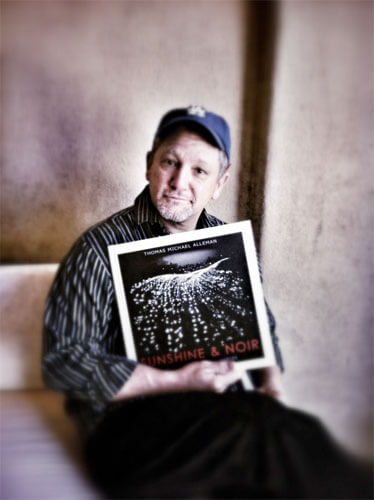Thomas Michael Alleman was born and raised in Detroit, where his father was a traveling salesman and his mother was a ceramic artist. He graduated from Michigan State University with a degree in English Literature. During a fifteen-year newspaper career, Tom was a frequent winner of distinctions from the National Press Photographer’s Association, as well as being named California Newspaper Photographer of the Year in 1995 and Los Angeles Newspaper Photographer of the Year in 1996.
As a magazine freelancer, Tom’s pictures have been published regularly in
Time,
People,
Business Week,
Barrons,
Smithsonian and
National Geographic Traveler, and have also appeared in US News & World Report, Brandweek, Sunset, Harper’s and Travel Holiday. Tom has shot covers for Chief Executive, People, Priority, Biz Tech, Acoustic Guitar, Private Clubs, Time, Investment Advisor, Diverse and Library Journal. Tom teaches “The Photographer’s Eye” at the Julia Dean Photo Workshops, and “Vision and Style” at the New York Film Academy, both in Hollywood.
Tom exhibited “Social Studies”, a series of street photographs, widely in Southern California. He’s currently finishing
Sunshine & Noir, a book-length collection of black-and-white “urban landscapes” made in the neighborhoods of Los Angeles.
Sunshine & Noir had it’s solo debut at the Afterimage Gallery in Dallas in April, 2006. Subsequent solo exhibitions include: the Robin Rice Gallery in New York in November 2008, the Blue Sky Gallery in Portland, OR, in October 2009, the Xianshwan Photo Festival in Inner Mongolia, China, in 2010 and California State, Chico, in 2011. In the summer of 2012, a dozen pictures from
Sunshine & Noir were featured in the “Photo Menage” exhibiton at the St. Petersburg Mueum of Art, in Russia, and ten prints will be shown during the RAYKO Gallery’s annual Plastic Camera Show in San Francisco in March, 2013, where Tom will be the Featured Artist. Also in early 2013, Tom will mount his first LA solo show, at the Duncan Miller Gallery, and his second solo show at the Robin Rice Gallery in New York City,
